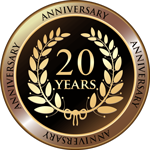Before the pandemic, the World Health Organization estimated that 9% of the global population was working long hours. Then they predicted the trend may worsen after the pandemic.
In the first global study of its kind, the WHO and the International Labour Organization reported that 745,000 people died in 2016 from stroke and heart disease due to working long hours—up 29% since 2000.
Working 40 hours per week or fewer is ideal, as research reveals that working 55 hours or more per week was associated with a 35% higher risk of stroke and a 17% higher risk of dying from heart disease.
What does all of this mean?
Now, more than ever, you need TIME on your side. And that time must be used MOST efficiently so you don’t have to spend ONE more additional hour at work than necessary.
But time is hiding and disappearing from professionals every day. Many believe they know where it’s going, citing meetings, interruptions and email.
But did you know? Most professionals DON’T know where their time is being lost or wasted in their workday.
And if they don’t know where it’s going, they don’t know how to get it back and where to look.
Having more time in your day doesn’t necessarily result from better “time management.”
Here’s a KEY concept to understand: having more time in your workday to do the things you really want to do is NOT ENTIRELY dependent upon how well you manage time itself.
Having more time also depends on how well you manage everything ELSE in your workday, such as tasks, email and information.
When these are managed poorly, HUGE amounts of time are lost in your workday—time that could have been spent more productively accomplishing tasks and moving projects forward.
In addition to lost time, energy and effort are lost, too. This causes you to lose momentum and productivity, which puts your progress into S-L-O-W… M-O-T-I-O-N.
There are two actions you can take to gain more time in your workday:
- You can PROTECT time from being stolen or being given away too quickly. This one *is* entirely about “time management” and results from protecting real time on your calendar every day, but be sure to do it ahead of time for every day, ad infinitum.
- You can also SAVE time from being lost or wasted in your workday, but not like saving time in a bank for later on. This is about saving time from being lost in the first place, because professionals are losing FAR too much time LOOKING for things they KNOW they have, but just can’t FIND. This time is saved by the ideal management of tasks, email and information and is outside of traditional “time management” methods.
Let’s look at the management of tasks, time and information individually to see how each of these impacts your time.
Time is Lost in your Information Management Method.
Whether you pull it into your workday or it’s pushed at you through various channels, you MUST be able to find information FAST—and WITHOUT an extended search—when looking for things like papers, files, e-documents, emails, attachments, contact information, or any “thing” in your office.
And when you’re not able to find these quickly, the time spent looking is lost FOREVER.
It is increasingly essential for you to do TWO things REALLY well in order to best manage your information.
- Be decisive about WHAT you need and what you DON’T need, and WHY.
You must stay in control of the VOLUME of information you keep, whether you request it or simply receive it. Plus, you should only keep what is USEFUL to you. If you bypass the entire decision-making process, it will lead you to keep everything without question, thereby increasing the VOLUME of information you keep and the time it takes to find what you need. The less you keep, the less you have to manage, and the less you have to sift through when looking for something.
- Be systematic about WHERE and HOW you store items and information.
It’s essential to be systematic about establishing the best locations for storage, including how items are organized and how information is categorized—again, so you can find things quickly and easily. If you don’t take charge on this step, information will quickly build up in all the WRONG places and make it more difficult for you find anything quickly, which will certainly slow your daily progress. When you manage information efficiently and effectively, you’ll find it more quickly, and then you can get back to the task you were trying to finish or finish the email you were trying to send. This keeps your progress moving forward.
Time is Lost in Your Task Management Method.
Some of the information you come into contact with will represent or activate a task or a follow-up. How these are managed will determine how much or how little time you will have to use productively in your day.
Time disappears when professionals continuously check the multiple sources of tasks in their day in order to plan and prioritize them. Tasks come from more than 10 different sources in your workday. Email is one of them. You also have phone calls, texts, meetings, hallway conversations, social media, instant messaging, the papers and files on your desk, and more.
And when a to-do list is created on paper, the to-do list is a “tool,” but then it becomes yet another source.
Yes, we all have to CHECK these sources for tasks, but it’s what you DO with those tasks AFTER you find them that makes all the difference to your time, efficiency and productivity.
If you’re trying to plan and prioritize in your head, this is why you have to keep looking back at the email inbox to see what you flagged… keep looking back at your paper to-do lists to see what you wrote… keep scanning your desk to see the papers and files there representing things to do… and keep comparing everything to figure out what to do next.
The other losses of time related to task management include…
- Writing and re-writing to-do lists on paper.
- Reacting to a new task you don’t want to forget, but have nowhere to put, so you do it right away, even if it’s not a priority. This creates a reactive cycle for getting things done and slows down your progress on more important tasks that you set aside for lesser tasks.
- Remembering a task you forgot the day before and now you have to delay work on ANOTHER task you had planned for today in order to care of what was previously forgotten. This just continues a cycle of being reactive, behind and worried about what you might have missed or forgotten.
- Regrouping after finishing a task to figure out what to do next. This means you have to review all of those sources of tasks again to find the next most important task to do.
You could save ALL of this time (and more!) when you use a central, digital Task List into which you can pour ALL of the tasks you’re responsible for—no matter the source or when you’ll take action.
Also, avoid using a little task app on your phone. Use the task list in your email system, because it’s connected to email, calendar, contacts and notes. It will be the MOST efficient option. THEN you can synchronize that list with the one on your phone.
Time is Lost in your Email Management Method.
Time is lost EVERY time you look at email after email, but do nothing with each one after reading it. This is a productivity-killer for sure.
You might read the email and think, “I can’t deal with this right now,” “I need more time for this,” or “my brain can’t handle this right now,” and then… “I’ll come back to this LATER.”
As a result, emails accumulate and scroll off the screen—and along with them the many tasks, follow-ups, information, questions, and opportunities that were in those emails. In order to find anything again later, you must flag emails or mark them as ‘unread’ so they appear bold in the Inbox, and then spend time [read: WASTE time!] scrolling through your Inbox or running a system Search to find specific emails. Or worse, you have to sift through PRINTED emails you have on your desk. Yikes!
If this is how you’re managing emails, you’re wasting time re-reading emails you’ve ALREADY seen, but couldn’t do anything with.
The time and energy lost from this process is HUGE. But it can be avoided.
When you create a centralized, digital task list as mentioned earlier, you’ll have a ready place for tasks and follow-ups that arrive in email. And when you establish reliable locations for all of your reference information, like e-documents, papers and files, you’ll have ready places for saving reference information too.
That means as you read each email—for the FIRST TIME—you can make a decision and get each and every email OUT of the Inbox.
When you get to zero in the Inbox, then you’ll know you’ve seen everything, made a decision on everything, and moved all of those emails (or the information or attachments within) into BETTER locations for reference or action, or they’re gone—archived or deleted.
=====================
Knowing about all the places where time is lost and wasted in your workday processes gives you the power to get that time BACK. It’s time to take charge of your workload management processes to gain more time in your workday.
When you do, you’ll be able to increase your efficiency and productivity, and make more meaningful, powerful progress on the tasks and projects that matter the most—and you can do it all faster and easier, and with a lot less stress.



